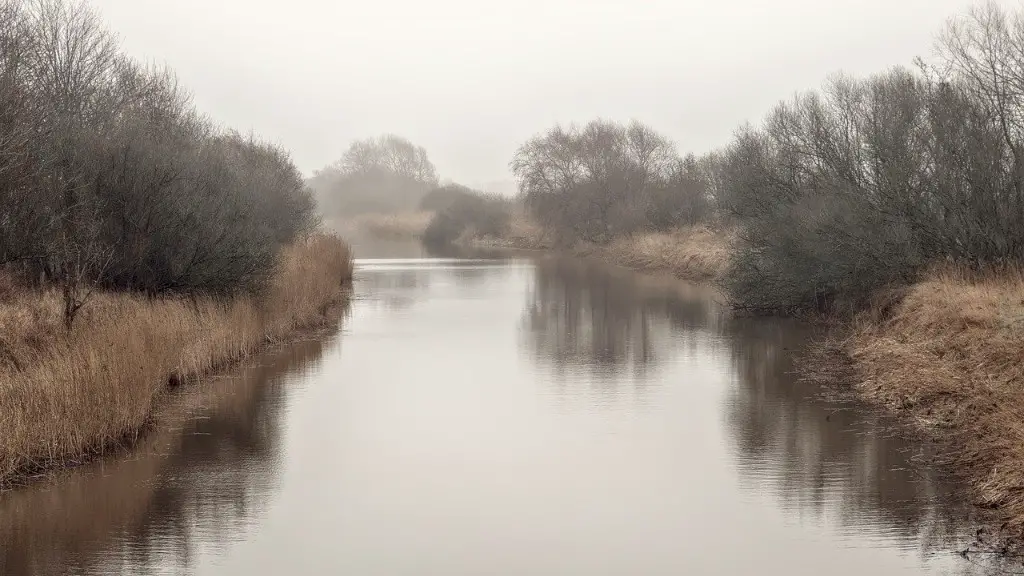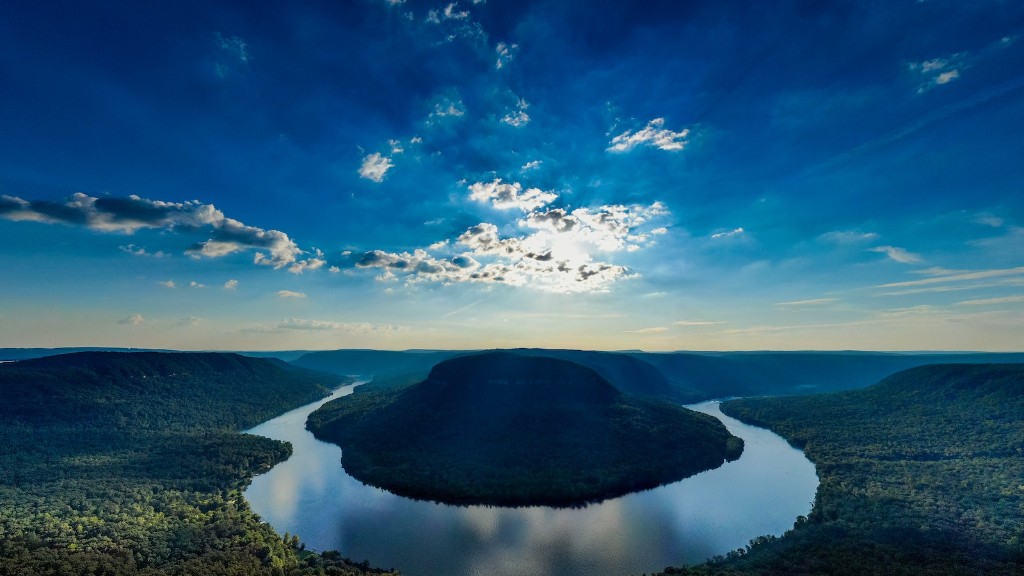Yangtze River is the longest river in China and flows more than 6000 kilometers, bringing floods, lush and lush landscapes to the vast area of its drainage. It has been an important cultural symbol and economic lifeline for the country since ancient times. However, it is also an important source of pollution. The river has become extremely murky due to the steady increase of man-made pollution and environmental degradation.
Silt is the main cause of the river’s muddiness. Much of the river’s silt comes from soil erosion caused by human activities such as intensive farming, deforestation, and construction. As overgrazing has been a problem for centuries, especially in the upper reaches of the river, the topsoil has been depleted, causing the river to carry more silt than it naturally would. Silt-laden rivers cause the river to become deeper, narrowing it further and making the flow of water faster, generating more waves and making it harder to navigate.
In addition to the natural causes, industrial and agricultural activities also contribute to the increasing murkiness of the Yangtze River. Industrial chemicals such as nitrate, phosphate and ammonia, as well as organic compounds such as phenols, have been found in the river and these pollutants are detrimental to both the health of the river and its inhabitants. Poorly managed and under-regulated agricultural activities such as chemical fertilizers, pesticides, animal waste and irrigation are further accentuating this problem.
Industrial and agricultural wastewater discharge has been long identified as a major source of river pollution. Sewage from cities increases the concentration of nutrients and organic matter that aids the growth of algae and aquatic weeds, making the water cloudy and muddily. High concentrations of heavy metals have also been detected in the river caused by unappropriate disposal of industrial waste. The solid waste generated by household activities, such as plastic bags, bottles, cans and paper, can hinder the natural flow of the river and lead to its further muddiness.
The Chinese government has taken various measures to control the pollution of the Yangtze river, including the establishment of environmental protection programs and the construction of wastewater treatment plants. It is also trying to reduce its dependence on chemical fertilizers and pesticides and to promote sustainable agricultural practices. However, it is important to remember that it is not only the government but individuals that can make a difference. Awareness must be raised and citizens must be educated about the effects of pollution on their health and the environment.
Solutions to mitigate silt accumulation
One solution to reduce silt accumulation in the Yangtze river is to invest in soil conservation measures such as terracing, shelterbelt planting and no-till farming. These techniques are aimed at reducing water erosion by keeping the soil in place. Furthermore, reducing deforestation would help prevent the soil from eroding more easily, allowing the river to remain cleaner.
Another solution is to regulate and improve agricultural practices in the watershed. This includes improving irrigation and drainage systems and regulating the use of chemical fertilizers and pesticides. It is also important to introduce measures to prevent large-scale construction, as the disruption of river ecosystems due to dams and other structures can worsen the already poor water quality in the Yangtze River.
Finally, strict enforcement of existing environmental regulations is essential to ensure that existing and potential sources of pollution are addressed properly. Waste disposal needs to be properly enforced as wastewater and solid domestic waste can easily seep into the river, making it murky and dirty. Governments need to continue investing in water quality monitoring and early warning systems to ensure that the river remains clean and healthy.
Long-Term Solutions to Cleanse the Yangtze River
Several long-term solutions have been proposed to address the problem of river pollution in the Yangtze. One of these is the adoption of ‘eco-compensation’, which sees industrial and agricultural producers paying compensation to the government for their environmental impact. The proposed system also includes incentives such as grants and subsidies to promote research and innovation in green technologies to reduce pollution.
Education and public awareness are also components of a viable long-term solution to pollution in the Yangtze. Education is key to raising awareness and encouraging citizens to act responsibly and look after their environment. This can involve initiatives such as creating environmental lessons for schoolchildren and encouraging production and consumption of green products.
Investment in green energy is another important part of the solution. Clean energy sources such as solar and wind can drastically reduce emissions and help to protect the environment. The Chinese government is already investing heavily in renewable energy; the country is now the world’s largest producer of solar and wind energy and has the world’s largest hydropower station on the river.
Finally, governments need to cooperate to address the problem. Cross-border pollution is an issue that must be addressed by countries working together. Regional cooperation can help to reduce the sources of pollution, such as agricultural runoff, that muddy the waters of the Yangtze.
Challenges of Cleaning the Yangtze
Cleaning the Yangtze River is no small task and there are several challenges that must be addressed. One of the main challenges facing this project is the lack of budget and resources. Cleaning up the river and its tributaries will take considerable investment in order to introduce innovative technologies and fund research into new cleaner solutions. Furthermore, the scale of the project is immense; the distance that the river covers, combined with its volume, means that it would take an excessive amount of resources and time to clean up all the pollution.
Another challenge is to create effective legislation that will ensure the necessary environmental standards and prevent pollution from occurring in the future. This requires creating, improving and enforcing existing environmental laws and preventing non-compliance. Effective legislation will also be needed to ensure that the solutions to the Yangtze problem are sustainable and that the solutions that are implemented are accessible and long-lasting.
Finally, cultural change is needed to motivate people to act responsibly. A shift in attitudes, especially among younger generations, must occur in order to encourage people to take individual responsibility for their environment. This will involve providing educational opportunities to promote a sustainable lifestyle and spreading awareness of the importance of preserving the environment.
Economic Development along the Yangtze
The economic development of the Yangtze River presents both an opportunity and a challenge. The development of industry and infrastructure in the region provides economic opportunities for local residents, but also carries the risk of increased pollution. In order to ensure that economic development is not compromised by river pollution, effective policies and structures must be put in place.
One such policy is the adoption of green development practices. This includes promoting the adoption of renewable energy generation and sustainable technologies, as well as creating financial incentives for businesses that adopt environmentally friendly practices. Furthermore, stricter regulations and enforcement on businesses’ waste management practices will help to reduce the amount of pollutants entering the Yangtze.
In addition to improving policies, there is a need to improve communication and collaboration between stakeholders. This includes involving local communities, businesses, and NGOs and encouraging them to share their perspectives and expertise. As economic development is a long-term process and involves many different issues, cooperation and collaboration across various levels will be essential to ensure that the process is successful.
Finally, it is important to create supportive institutions and systems that will ensure a long-term and sustainable approach to economic development along the Yangtze River. This includes strengthening the capacity of local authorities in areas such as monitoring, reporting, and enforcement and providing support for developing infrastructure that is necessary for a successful economic development process.
Public Participation in River Restoration
Public participation is an essential element of the effort to restore the Yangtze River. By involving local communities and engaging citizens in discussions on river clean-up and restoration, more effective solutions can be found. Public participation also helps to ensure that support and resources are obtained to implement the solutions that are put forward.
One way of involving citizens is through public meetings, where people are able to engage in discussions on the issue and exchange ideas and suggestions. This could range from meetings in schools and civic centres to online forums. Furthermore, it is important to create a platform for local communities to share their ideas and experiences and amplify the voices of marginalized communities.
Innovation competitions are another way of involving people in the process. This could involve challenging people to come up with creative solutions to river pollution and rewarding those with the best ideas. This could include initiatives such as ocean clean-ups, citizen science projects, or sustainability campaigns.
It is also important to provide citizens with the necessary information and resources to effectively participate in river clean-up efforts. This could include awareness raising campaigns and educational activities such as workshops, webinars and video content. Furthermore, citizens need to be provided with enough access to reliable information in order to be able to make informed decisions in decision-making processes.
Finally, it is important to support public participation initiatives with resources and funding. This could include providing funding for projects in local communities and mobilizing resources to support organizations and initiatives that are working towards restoring the Yangtze.





